
|

|

|

|

|

|
| Home | Manuals | Supplies | Search | Consult | Contact | Testing | Service |
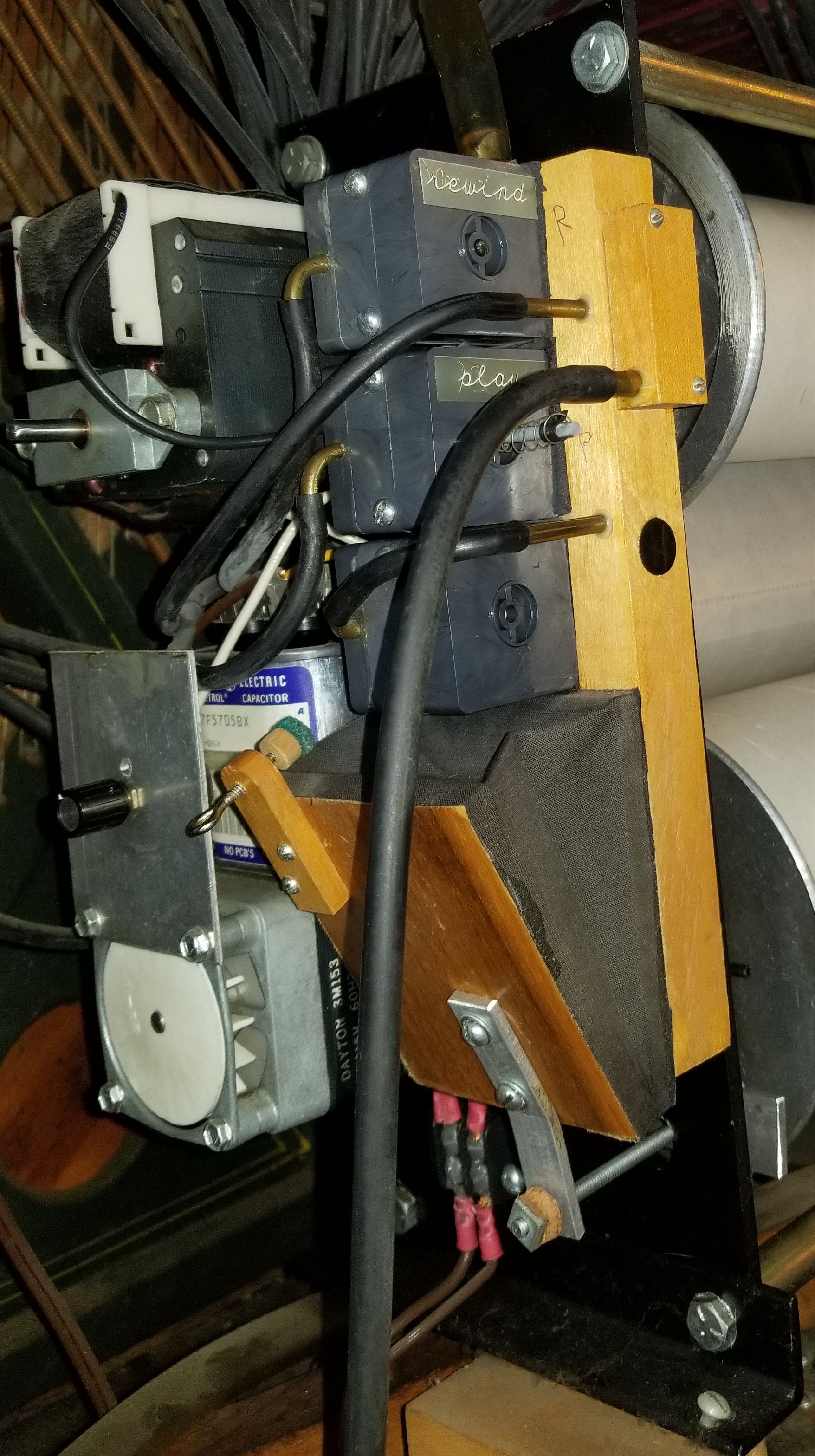
|
Perface: For purposes of clarity in this treatise, there are three plastic block valves in this device. When a block valve is in the 'off' (or 'closed') position, atmosphere is present in the upper chamber of the block. In the 'on' (or 'open') position, vacuum is present in the upper chamber of the block. Pneumatically speaking, this device is responsible for two main operations. One, to shift the gears in the roll frame from the Play position to the Rewind position during the Rewind cycle. Two, to change the state of the Vacuum Cut-Out Pouch, which is mounted on top of the electric vacuum pump, from 'on' to 'off' during the Rewind cycle. Electrically speaking, the Rewind bellows triggers a microswitch which applies voltage to the Rewind motor during the Rewind cycle or voltage to the Play motor during Play cycle. Know facts: All three block valves are connected to a common vacuum source. One block valve (marked Rewind -called valve 'A') defaults to the 'off' position and only changes state from 'off' to 'on' momentarily when the Rewind perforation passes over the Rewind hole in the trackerbar. As soon as the Rewind hole is covered (as the roll starts rewinding), the valve returns to the 'off' position. This block valve has a regular size bleed. One block valve (marked Play -called valve 'B') has a spring-loaded valve which defaults to the 'on' position. It stays in that position until it is 'locked' into the 'off' position during the complete Rewind cycle. It returns to the 'on' position when the Play perforation passes over the Play hole in the trackerbar at the end of the Rewind cycle. This block valve has an oversize bleed. The Play valve (B) must be 'locked' closed (or in the 'off' position) in order for valve C to turn 'on'. This can only happen if there is atmosphere in the exhaust side of the Play valve. One block valve (which is not marked -called valve 'C') defaults to the 'off' position and must be in the 'on' position to close the Rewind bellows during the entire Rewind cycle. And, it must turn back 'off' when the Play perforation passes over the trackerbar at the end of the Rewind cycle, and it must stay 'off' until the Rewind perforation in the music roll opens the Rewind hole in the trackerbar. This block valve has a regular bleed. One pouch block is used in conjunction with valve A to lock valve B in the 'off' position during the Rewind cycle. There are only two external inputs connected to this assembly. The one marked 'D' (in the first picture below) is the main vacuum supply. This is a constant vacuum source, coming directly from the electric vacuum pump, which is present at all times (while the nickelodeon is in operation). The nipple marked 'B' is connected to the Action Cut-Out Pouch on the Vacuum Pump Assembly (marked 'C' on the second picture below).
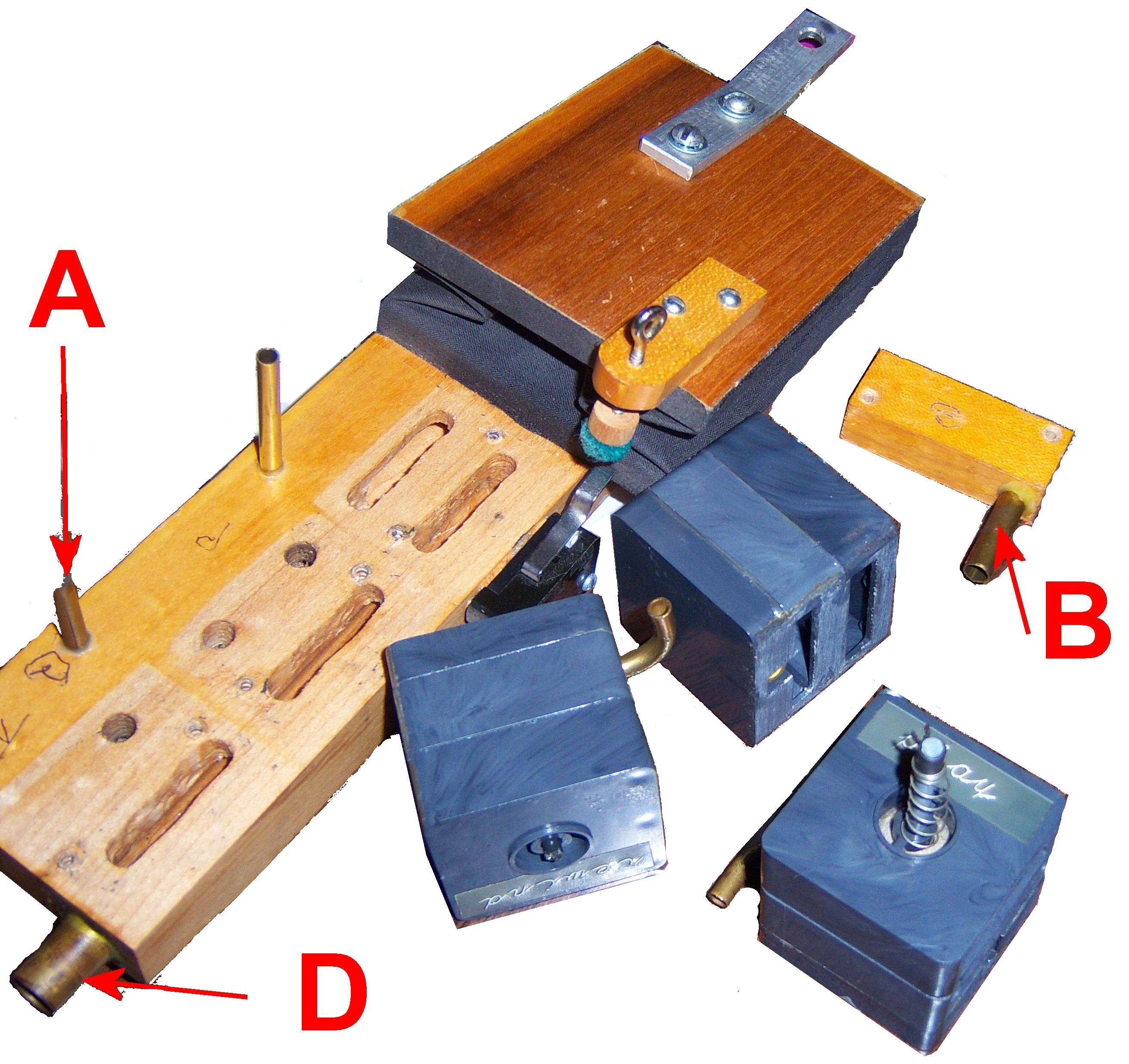
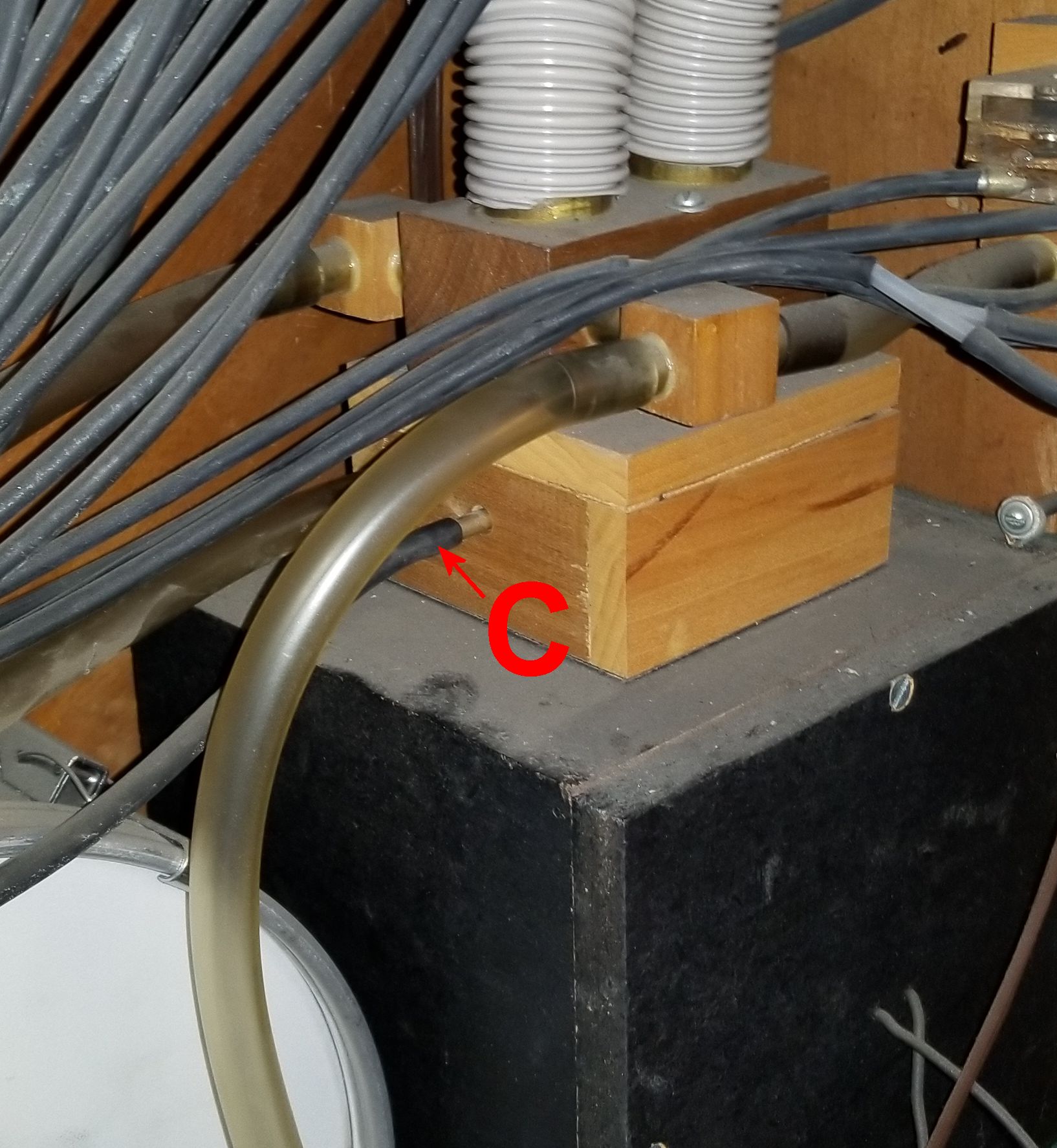 Below is a 3-D rendering of the air channels in the wooden block. The two red dots are patches that cover the ends of the holes that are drilled in the wooden block. Below that is a 3-D rendering of the Pouch Block. The area shaded in light brown represents the tan pneumatic leather pouch material that covers the bottom of the pouch block.
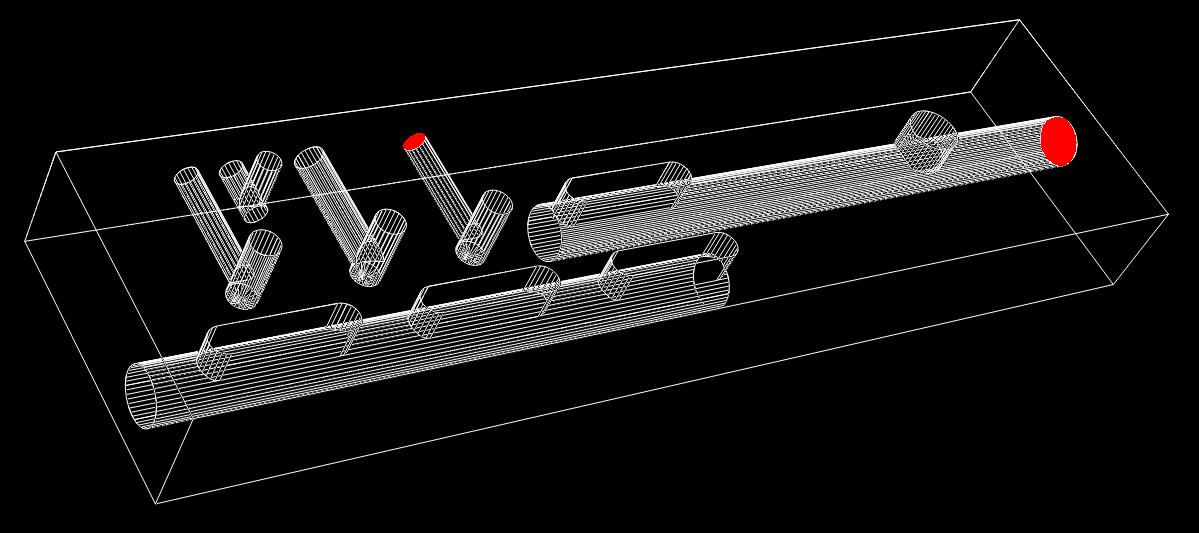
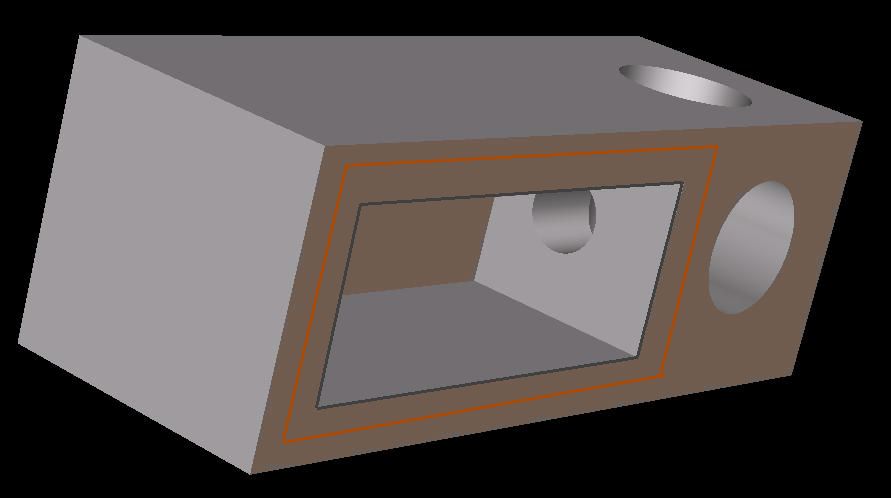
Referring to the diagram below, the default mode for this device is the Play mode. When vacuum is initially applied by the electric vacuum pump, valves 'A' and 'C' close. Valve 'B' is open because it is spring-loaded in the open position. As it turns out, the way this thing works is actually fairly simple. I discovered the simplicity by eliminating one of the distracters in the equation. What I did was I disconnected the hose going to point E. Then I opened the Rewind hole (A) momentarily. Instantly, the Play valve 'locked' and the bellows closed. And, when I closed the Rewind hole, the Play valve stayed locked. Once I realized that the vacuum present at point E didn't play an important part in locking the Play valve, everything cleared up.
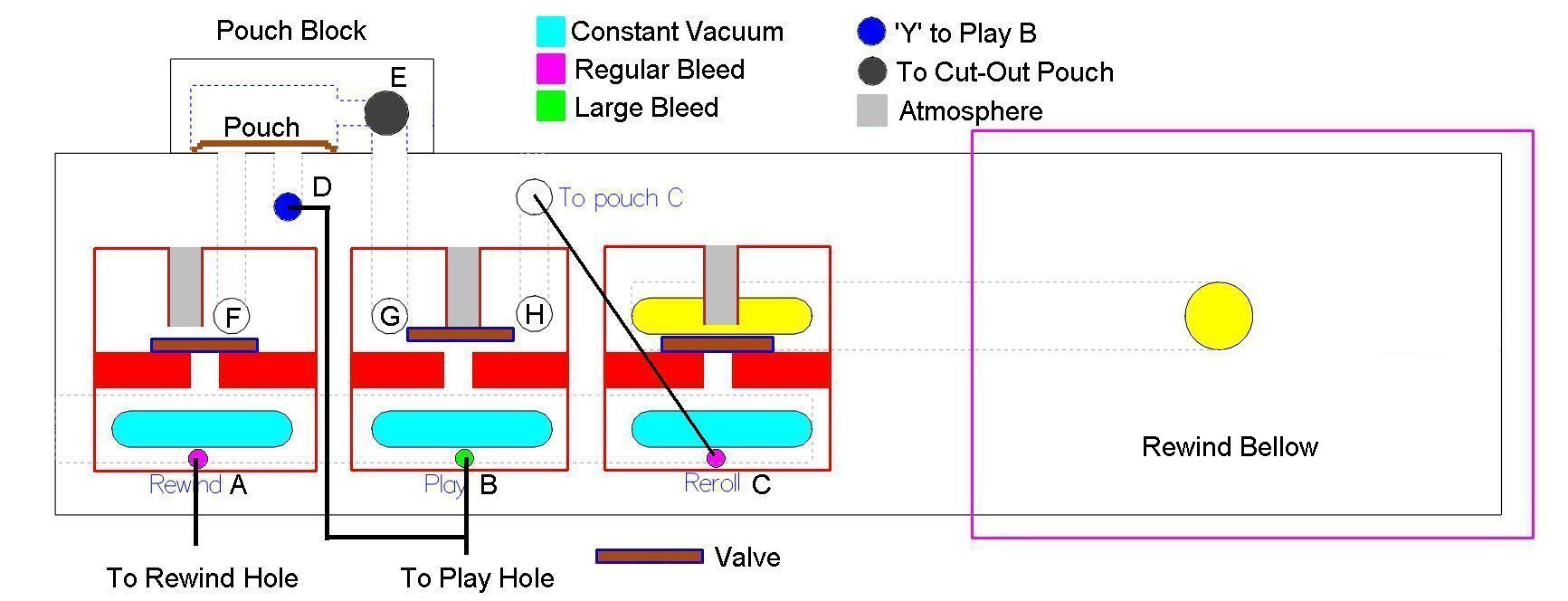 Referring to the diagram above, the Play valve (B) is actually 'on' all the time, except for when the system is in rewind. When the system is in Play mode, the Play valve is kept 'on' by an atmosphere signal that passes from the hole in the top of the Rewind valve through channel F, under the Pouch, and through channel D. This inflates the pouch in the Play valve and keeps the valve open (as shown in the graphic). Since the Play valve is open, vacuum inside the valve block is applied through channel G to point E, which is connected to the action Cut-Out Pouch, which allows vacuum to flow through the system and play all of the instruments (as called for by the music roll). The same vacuum inside the valve block is also applied to the Reroll pouch in the Reroll block, keeping its valve closed during the Play mode. Furthermore, the vacuum present at point E helps keep the Pouch in the Pouch Block in a raised or 'on' position.
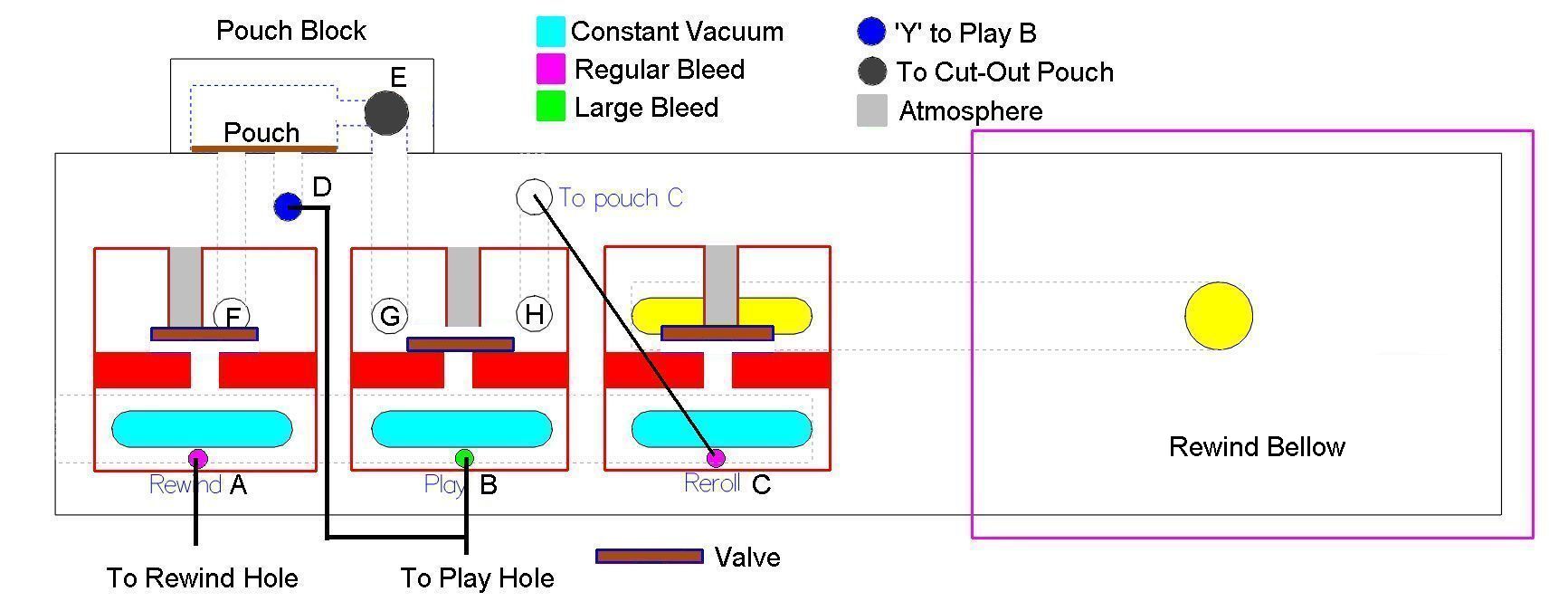 Referring to the diagram above, when the Rewind perforation opens the Rewind hole in the trackerbar, atmosphere flows through the hose from the rewind hole to the pouch in the Rewind valve. This inflates the pouch and opens the associated valve. The moment that happens, vacuum from inside the Rewind valve pulls the Pouch closed, covering port D. And, since there is a large bleed cup in the Play valve, vacuum from that bleed pulls the Pouch down and covers port D even though the Rewind valve closes (after the Rewind perforation closes as a result of the roll beginning to rewind.) This 'locks' the Play valve in the 'OFF' position. At the same time, when the Play valve closes, atmosphere coming into the upper chamber through the top of the Play valve provides an atmosphere signal to the Reroll pouch in the Reroll valve block, which causes that valve to turn 'on'. That allows vacuum to flow into the Rewind bellows, causing it to collapse, which moves the gears in the roll frame to the Rewind position. (When the bellows collapses, it also triggers a microswitch which turns off the power for the drive motor and turns on the power to the rewind motor.) The device will stay in the 'locked' position until the Play perforation in the music roll opens the Play hole in the trackerbar. When that happens, an atmosphere signal flows through the hose from the play hole to the pouch in the Play valve. This opens the Play valve and returns everything to the default position.
|

|
Since "Player-Care" is an internet business, I prefer that we correspond via E-Mail (click here to fill out the 'Request Form'). However, if I'm not in the middle of some other activity, you can reach me at 732-840-8787. But please understand that during the hours from 8AM-5PM EST (Mon-Sat), I'm generally quite busy. So, I probably won't answer the phone. If you get the answering machine, please leave a detailed message stating the reason for your call. Also, repeat your name and phone number clearly and distinctly. By necessity, I prioritize everything in my life. And, if you call and just leave your name and number, and ask me to call you back, it might be a day or two before I return your call. Why? Because I don't know why you want me to call and I might not be prepared to assist you in an effective and efficient manner. If you leave me an E-Mail address (which I prefer), spell it out phonetically. The more you do to help me, the more I can help you in return. Don't rush. You have four minutes to record your message. |
|
407 19th Ave, Brick, NJ, 08724 Phone Number 732-840-8787 (Voicemail Only, No Texts) |
